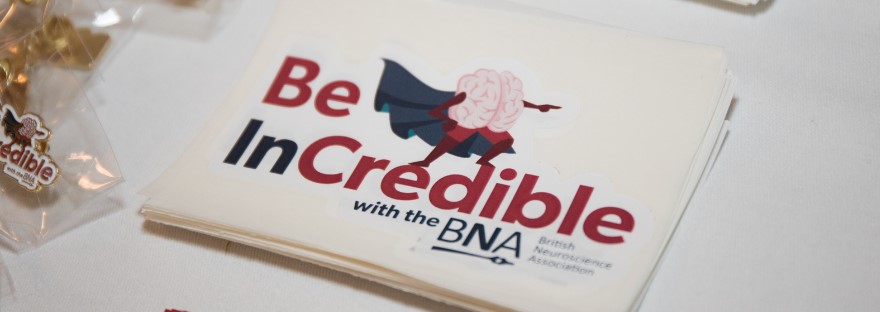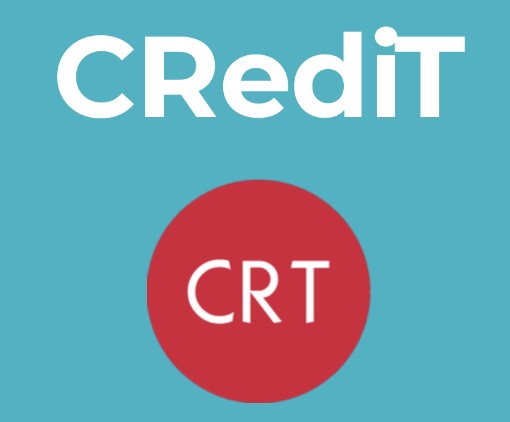Be (In)Credible at BNA2023

| Find out about the BNA's 'Credibility in Neuroscience' campaign and its mission to ensure that neuroscience research is as robust, reliable, replicable, and reproducible as possible. |
There's a revolution happening in the world of biomedical science. It's not just about one or two people anymore - it's about how we all do our research and share our results.
The 'Credibility in Neuroscience' activities at BNA2023 are all about helping you keep up with this change, so that you can do your best neuroscience and neuroscience has the best research.
Opening Plenary: The Change-Makers
We'll be leading front and centre with our Opening Plenary session featuring some of the most innovative thinkers in how to do neuroscience right now: Russ Poldrack, Saloni Krishnan, Madeline Lancaster, and Mike Ashby.
Chaired by BNA President Rik Henson, the session will discuss how different fields of neuroscience are working to build the best credible practices.
Attending this session will bring you up to speed with the progress made in recent years, and how building credibility can be applied in a variety of different neuroscience settings - including your own.
Pre-registration posters
Pioneered at the BNA2019 Festival of Neuroscience (see report published in Nature Human Behaviour), and now adopted by an increasing number of organisations worldwide, pre-reg posters allow presenters to discuss their plans for research instead of the results, meaning that:
- presenters get help and feedback at a stage when it's still useful: In contrast to 'traditional' posters, when feedback is given after experiments have been carried out, presenters of pre-reg posters are able to modify their plans based on advice received at the conference and improve the overall quality of their research.
- presenters can practice 'slow science' instead of rushing to get results for their poster. We believe that science should be slow - but not simply that it takes longer! 'Slow science' gives us time to think about our choices, check we're doing the best science possible, and make sure we get robust, reliable and reproducible results.
- presenters have the chance to form colloborations. By sharing ideas and plans at an early stage, there's the chance for presenters to collaborate with other researchers and potentially increase the data collected and power of their results.
Open Science badges - NEW for BNA2023!

- Preregistered
- Open data
- Open materials
Credibility in Neuroscience poster prizes - NEW for BNA2023!
We'll also be giving prizes for the best 'Credibility in neuroscience' posters at the conference, so if you're looking to get recognition on your work and get noticed by some of the top scientists in your field, this is the place to be!
'Pier Review': Policy and Advocacy zone
The most important thing you can do for your research is to be credible. But how do you do that? How do you ensure that your work is held to the highest standards?
Come and talk to members of the BNA's Credibility Advisory Board at the 'Pier Review' Policy and Advocacy zone. This will be open throughout the Festival in the Exhibition hall, with lots of information, advice and people on hand for you to explore what it means to Be InCredible in Neuroscience!
Brain and Neuroscience Advances: the Festival journal
We're delighted that all accepted poster abstracts will be printed in the Festival's Gold Open Access journal, Brain and Neuroscience Advances, the society journal wholly-owned by the BNA.
With publishing so influential to how research is done, this journal plays a key role in providing a way for neuroscientists to adopt credibility publishing practices. Such practices available at Brain and Neuroscience Advances include the following:
Transparency and Openness Promotion (TOP) guidelines
TOP Guidelines are eight modular standards that journals can implement to increase the transparency of the research they publish. We are part of a growing number of neuroscience journals (including European Journal of Neuroscience, Nature Human Behavior, Journal of Neurochemistry) that are implementing TOP standards (e.g., open data and material sharing, publication of replication studies).
Open Science Badges
We strongly urge all authors to share their data, materials and analysis code, and to preregister their work. In acknowledgement, we award open science badges.
Example of a neuroscience publication that has been awarded open science badges for open materials and open data: J Neurochem, 2019. Metabolic constraints of swelling-activated glutamate release in astrocytes and their implication for ischemic tissue damage. *Open Materials* and *Open Data*
Transparent contribution reporting
 To recognise and acknowledge the diversity of author contributions, each research article at our journal must include a contributions section listing the specific roles of everyone involved. To help reporting this important information, we recommend the CRediT taxonomy.
To recognise and acknowledge the diversity of author contributions, each research article at our journal must include a contributions section listing the specific roles of everyone involved. To help reporting this important information, we recommend the CRediT taxonomy.
See an example of an article that uses CRediT taxonomy at Brain and Neuroscience Advances: Mapping the impact of exposure to maternal immune activation on juvenile Wistar rat brain macro- and microstructure during early post-natal development (2019).
Registered Reports
The Registered Report format aims to improve the reproducibility and replicability of research. Unlike traditional articles, Registered Reports are accepted for publication at the study design stage, prior to work being carried out. This means we will publish your work irrelevant of the outcome. Registered Reports are also awarded a preregistration open science badge.
Example of a Registered Report at Brain and Neuroscience Advances: Effect of apolipoprotein E polymorphism on cognition and brain in the Cambridge Centre for Ageing and Neuroscience cohort.(2020)
Peer Community In Registered Reports
 To strengthen our Registered Reports offering for authors, we have joined the PCI RR initiative, which is dedicated to receiving, reviewing, and recommending Registered Reports across the full spectrum of STEM, medicine, the social sciences and humanities. This links the journal to a peer review community specialising in rigorous review of Registered Reports, while benefiting authors by providing them with flexibility of deciding which of the PCI RR friendly journals to publish in.
To strengthen our Registered Reports offering for authors, we have joined the PCI RR initiative, which is dedicated to receiving, reviewing, and recommending Registered Reports across the full spectrum of STEM, medicine, the social sciences and humanities. This links the journal to a peer review community specialising in rigorous review of Registered Reports, while benefiting authors by providing them with flexibility of deciding which of the PCI RR friendly journals to publish in.
Preregistration
We also welcome the submission of preregistered work, for instance, using the OSF. For this we will award a preregistration open science badge.
Example of an article that was preregistered on a repository before publication in a journal: Neuropsychologia, 2019. For a minute there, I lost myself … dosage dependent increases in mind wandering via prefrontal tDCS.
Publishing null results
Have you conducted a robust study, but your results prove (instead of reject) the null hypothesis? Don’t worry: at Brain and Neuroscience Advances, we publish null results.
Example of an article that publishes null results: PLOS ONE, 2018. Can a single pulse transcranial magnetic stimulation targeted to the motor cortex interrupt pain processing?
